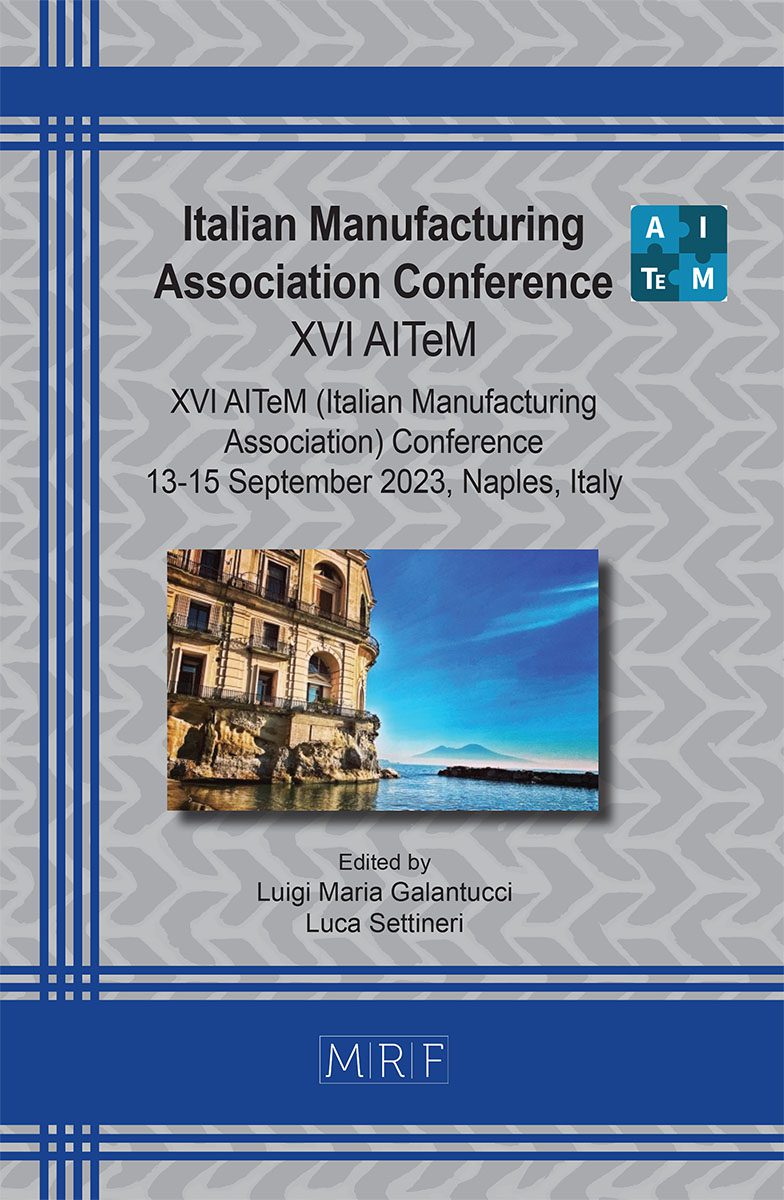The ranking-aggregation problem in manufacturing: potential, pitfalls, and good practices
Fiorenzo Franceschini, Domenico Augusto Maisano, Luca Mastrogiacomo
download PDFAbstract. A number of experts, who individually rank a set of objects based on a certain attribute, and the need to aggregate the resulting (subjective) rankings into a collective judgement: these are the “ingredients” of the ranking-aggregation problem, which is typical of social choice, psychometrics and economics. This paper shows that the problem has many interesting applications even in manufacturing and must be approached with care, in order to avoid misleading results. Through a real-world case study concerning cobot-assisted manual (dis)assembly, the paper illustrates (i) a methodology to tackle the problem in a practical and effective way and (ii) various useful tools (e.g., for estimating the degree of concordance among experts, the consistency and robustness of collective judgment, etc.). The article is addressed to scientists and practitioners in the manufacturing field.
Keywords
Decision Making, Performance Indicators, Ranking-Aggregation Problem
Published online 9/5/2023, 10 pages
Copyright © 2023 by the author(s)
Published under license by Materials Research Forum LLC., Millersville PA, USA
Citation: Fiorenzo Franceschini, Domenico Augusto Maisano, Luca Mastrogiacomo, The ranking-aggregation problem in manufacturing: potential, pitfalls, and good practices, Materials Research Proceedings, Vol. 35, pp 276-285, 2023
DOI: https://doi.org/10.21741/9781644902714-33
The article was published as article 33 of the book Italian Manufacturing Association Conference
![]() Content from this work may be used under the terms of the Creative Commons Attribution 3.0 license. Any further distribution of this work must maintain attribution to the author(s) and the title of the work, journal citation and DOI.
Content from this work may be used under the terms of the Creative Commons Attribution 3.0 license. Any further distribution of this work must maintain attribution to the author(s) and the title of the work, journal citation and DOI.
References
[1] Spohn, W. (2009). A survey of ranking theory. In Degrees of belief (pp. 185-228). Springer, Dordrecht. https://doi.org/10.1007/978-1-4020-9198-8_8
[2] Reich, Y. (2010). My method is better!, Research in engineering design 21(3): 137-142. https://doi.org/10.1007/s00163-010-0092-3
[3] Saari D.G. (2011). Decision and elections, Cambridge: Cambridge University Press.
[4] Arrow K.J. (2012). Social choice and individual values, 3rd edn. Yale University Press, New Haven.
[5] Köksalan, M., Wallenius, J., Zionts, S. (2013). An early history of multiple criteria decision making. Journal of Multi‐Criteria Decision Analysis, 20(1-2): 87-94. https://doi.org/10.1002/mcda.1481
[6] Franceschini, F., Maisano, D., Mastrogiacomo, L. (2022) Rankings and Decisions in Engineering: Conceptual and Practical Insights. International Series in Operations Research & Management Science Series, Vol. 319, Springer International Publishing, Cham (Switzerland), ISSN: 0884-8289. https://doi.org/10.1007/978-3-030-89865-6
[7] Franceschini, F., Maisano, D. (2019). Design decisions: concordance of designers and effects of the Arrow’s theorem on the collective preference ranking. Research in Engineering Design, 30(3), 425-434. https://doi.org/10.1007/s00163-019-00313-9
[8] Chatterjee, P., Chakraborty, S. (2014). Flexible manufacturing system selection using preference ranking methods: A comparative study. International Journal of Industrial Engineering Computations, 5(2), 315-338. https://doi.org/10.5267/j.ijiec.2013.10.002
[9] Qin, Y., Qi, Q., Scott, P.J., Jiang, X. (2020). An additive manufacturing process selection approach based on fuzzy Archimedean weighted power Bonferroni aggregation operators. Robotics and Computer-Integrated Manufacturing, 64, 101926. https://doi.org/10.1016/j.rcim.2019.101926
[10] Franceschini, F., Maisano, D. (2018). Classification of objects into quality categories in the presence of hierarchical decision-making agents. Accreditation and Quality Assurance, 23(1), 5-17. https://doi.org/10.1007/s00769-017-1291-7
[11] Gervasi, R., Mastrogiacomo, L., Maisano, D. A., Antonelli, D., Franceschini, F. (2022). A structured methodology to support human-robot collaboration configuration choice. Production Engineering, 16: 435-451. https://doi.org/10.1007/s11740-021-01088-6
[12] Gibbons, J.D., Chakraborti, S. (2010). Nonparametric statistical inference (5th ed.). CRC Press, Boca Raton, ISBN 978-1420077612. https://doi.org/10.1201/9781439896129
[13] Kendall, M. G. (1962). Ranks and measures. Biometrika, 49(1/2), 133-137. https://doi.org/10.1093/biomet/49.1-2.133
[14] Agresti, A. (2010). Analysis of Ordinal Categorical Data (2nd ed.), New York: John Wiley & Sons. https://doi.org/10.1002/9780470594001
[15] Ross, S.M. (2009). Introduction to probability and statistics for engineers and scientists. Academic Press. https://doi.org/10.1016/B978-0-12-370483-2.00006-0
[16] Figueira, J., Greco, S., Ehrgott, M. (2005) Multiple criteria decision analysis: state of the art surveys. Springer, New York. https://doi.org/10.1007/b100605
[17] Borda, J.C. (1781). Mémoire sur les élections au scrutin, Comptes Rendus de l’Académie des Sciences. Translated by Alfred de Grazia as Mathematical derivation of an election system, Isis, 44:42-51. https://doi.org/10.1086/348187
[18] McComb C., Goucher-Lambert K., Cagan J. (2017), Impossible by design? Fairness, strategy and Arrow’s impossibility theorem. Design Science, 3:1-26. https://doi.org/10.1017/dsj.2017.1
[19] Saltelli, A., Ratto, M., Tarantola, S., & Campolongo, F. (2006). Sensitivity analysis practices: Strategies for model-based inference. Reliability engineering & system safety, 91(10-11), 1109-1125. https://doi.org/10.1016/j.ress.2005.11.014












